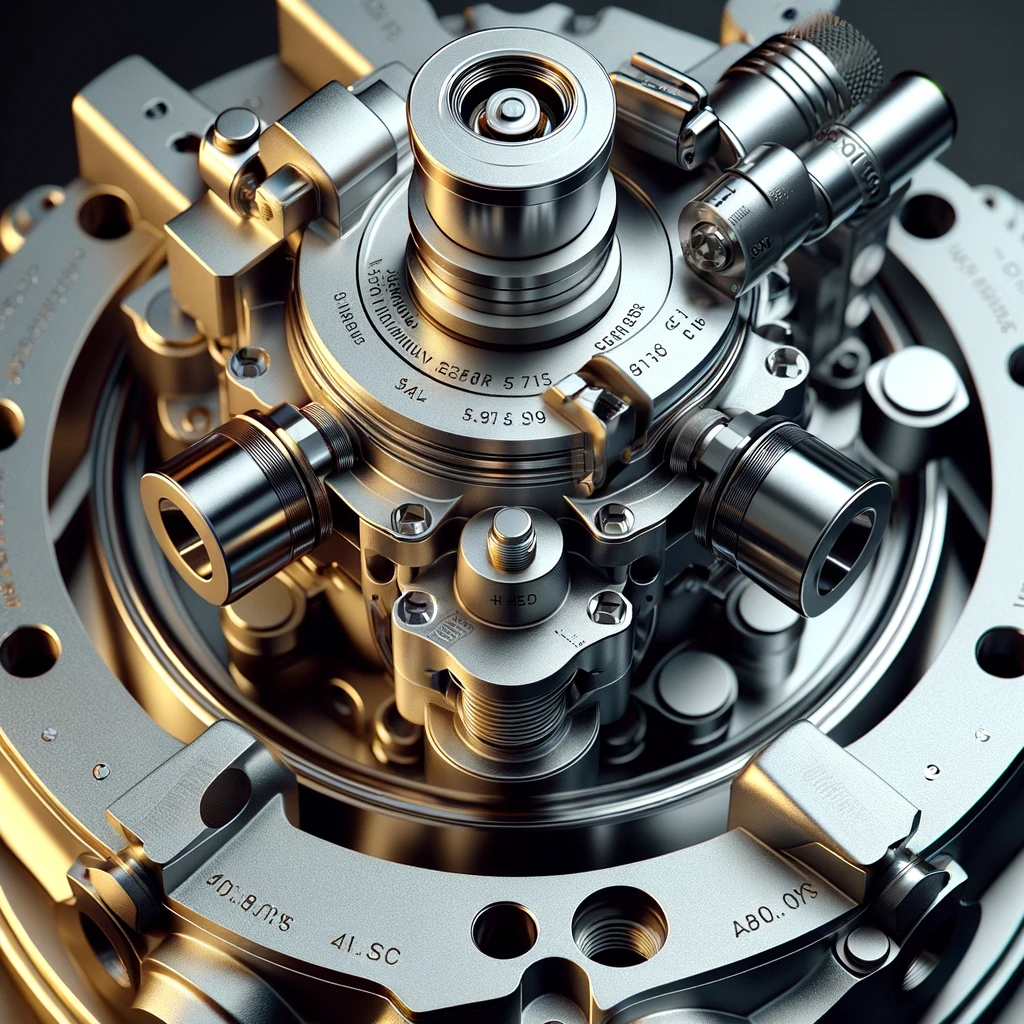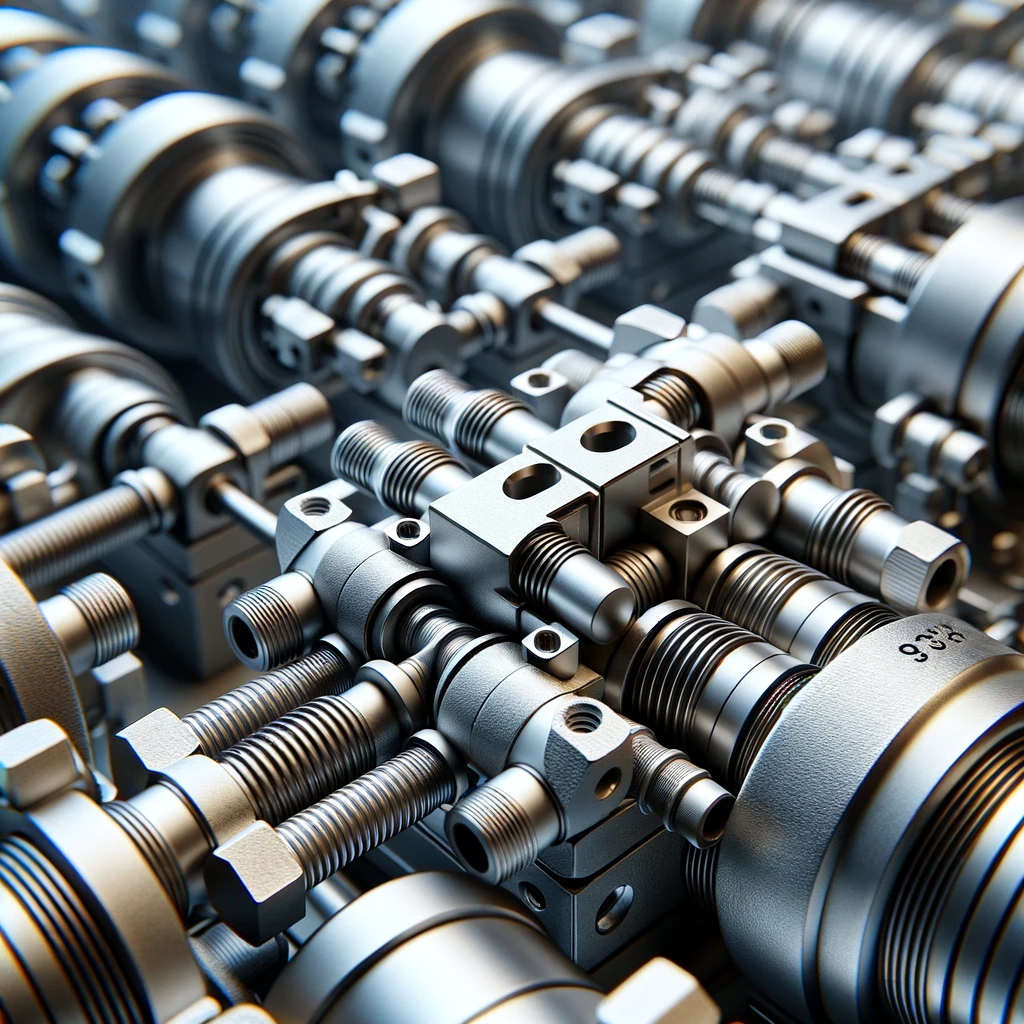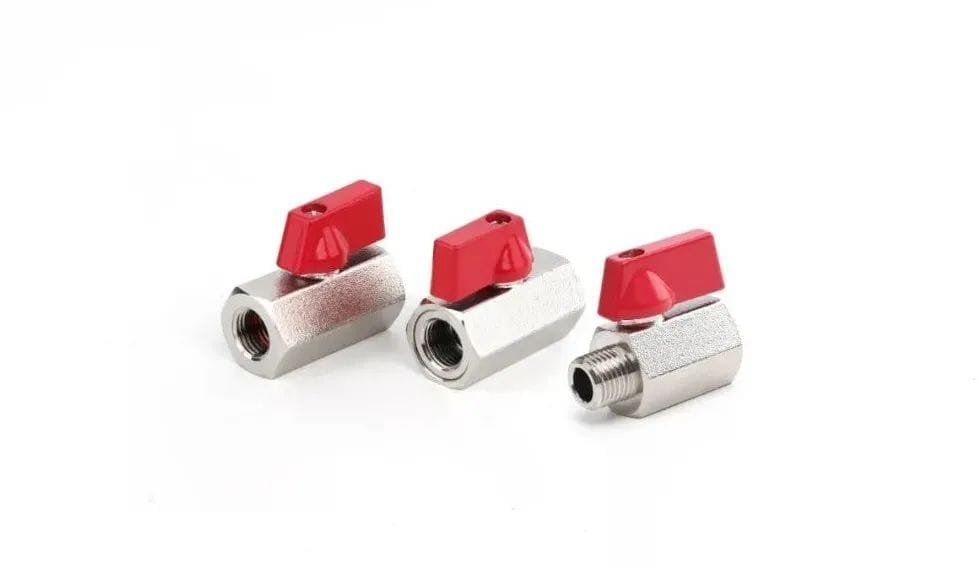What Is A Pneumatic Shuttle Valve
A pneumatic shuttle valve is a type of valve used in pneumatic systems to allow airflow from one of two input ports to a single output port, while preventing air from flowing back into the inactive input port. It acts as a directional device, ensuring that air pressure can be switched or combined from different sources efficiently.
Understanding the function and importance of pneumatic shuttle valves is crucial for optimizing the performance and reliability of pneumatic systems. These valves play a key role in managing air flow direction and source selection in various industrial applications, making their study essential for professionals working with pneumatic equipment.
What Is A Pneumatic Shuttle Valve
A pneumatic shuttle valve is a type of valve used in compressed air systems. It is designed to select between two air sources, directing the higher pressure source out through a common outlet. This valve plays a critical role in ensuring that the most efficient air path is always used. Unlike more complex valves, it operates on a simple principle, relying on the pressure differential to function.
The core functionality revolves around its ability to automatically choose the input line with higher pressure. This makes it indispensable for systems requiring a reliable alternate source of air or gas. The design of a pneumatic shuttle valve is straightforward, typically consisting of an internal ball or piston that moves to block one inlet while allowing flow from the other.
What Is The Function Of Pneumatic Valve
Pneumatic valves control air flow. They are used to start, stop, and regulate air pressure. Their role in systems is crucial for managing the performance of pneumatic devices. These valves ensure that air moves in the right direction at the correct speed and pressure.
Each pneumatic valve has a specific function based on its design. Some valves direct flow paths, while others adjust pressure or control the volume of air. This versatility allows them to support a wide range of applications.
How Does Pneumatic Shuttle Valve Work
The pneumatic shuttle valve operates on a simple mechanism. It selects between two input pressures, directing the higher one to its output port. This selection process is key to its functionality. Inside, a movable element, often a ball or shuttle, shifts position based on input pressures. When pressure is applied to one inlet, this element moves to block the other inlet. This ensures that only the inlet with higher pressure can pass air through to the output.
This movement does not require external control signals or electricity. The internal dynamics of fluid pressure dictate the shuttle’s position. This simplicity contributes significantly to the valve’s reliability and efficiency in pneumatic systems.
It effectively serves as an automatic switch between two sources of air pressure. For example, if one source fails or drops in pressure, the valve will seamlessly switch to the secondary source. Thus, ensuring continuous operation without manual intervention.

Component Of Pneumatic Shuttle Valve
Body
The body of a pneumatic shuttle valve is the outer casing that houses all internal components. It’s typically made from materials such as aluminum, brass, or stainless steel, chosen for their durability and resistance to corrosion. The body contains the inlet ports for the two input sources and an outlet port for the output.
Shuttle
The shuttle is a moving component within the valve that directs the flow of air from the selected input port to the output port. It moves laterally within the valve body, positioning itself to block one inlet while allowing air to pass from the other inlet to the outlet. The movement of the shuttle is determined by the pressure differential between the two input sources.
Springs
In some designs, springs are used to return the shuttle to a neutral or default position when there is no pressure differential between the two inputs. This ensures that the valve remains in a fail-safe position when not in active use or if the pressure on both sides is equal.
Seals
Seals are critical for preventing air leaks within the valve. They are placed around the shuttle and between the valve body and any movable components. These seals are usually made from materials like nitrile or polyurethane, which offer good flexibility and resistance to wear and tear from continuous movement.
Ports
The valve typically has three ports: two inlet ports and one outlet port. The inlet ports are connected to the two alternative air supply sources, while the outlet port is connected to the device or system requiring pneumatic power. The design and configuration of these ports are crucial for ensuring efficient air flow and compatibility with other pneumatic components.
End Caps
End caps are used to enclose the ends of the valve body, securing all internal components in place. They can also provide mounting options for the valve or additional connections for accessories.
Advantages Of Pneumatic Shuttle Valve
Simple Design and Operation
Pneumatic shuttle valves feature a straightforward design that facilitates easy operation. Typically consisting of a moving part within a housing that selects the higher pressure between two input ports to supply to the output port, their simplicity makes them reliable and easy to maintain. This minimalistic approach ensures that they can be incorporated into various systems without complex integration procedures.
High Speed and Efficiency
Due to their pneumatic nature, shuttle valves operate at high speeds, making them ideal for applications requiring rapid switching between pressure sources. This speed is a direct result of using compressed air as the driving medium, which can move quickly through the valve with minimal resistance. The efficiency and speed of shuttle valves enhance the overall performance of pneumatic systems, contributing to faster response times in automated processes.
Durability and Low Maintenance
Pneumatic shuttle valves are built to withstand harsh conditions, including high pressures and extreme environments. Their robust construction typically involves materials that resist wear and corrosion, such as stainless steel or brass, ensuring a long service life. Additionally, the simplicity of their design translates into fewer moving parts, which reduces the likelihood of mechanical failure and lowers maintenance requirements, making them a cost-effective solution for many industrial applications.
Versatility
Shuttle valves are highly versatile components that can be used in a wide range of applications. They are suitable for use in various industries, including manufacturing, automotive, and robotics, due to their ability to efficiently manage air flow between two sources. This versatility ensures that they can be employed in both simple and complex pneumatic systems to control the direction of airflow, acting as non-return valves where necessary.
Cost-Effective
The simplicity and durability of pneumatic shuttle valves make them a cost-effective choice for many systems. Their initial purchase cost is generally lower compared to more complex valve types. Furthermore, their long service life and minimal maintenance requirements contribute to lower total cost of ownership over time. This cost-effectiveness, combined with their operational efficiency, makes shuttle valves an attractive option for budget-conscious applications.
Safety
Pneumatic shuttle valves enhance the safety of pneumatic systems by allowing for the automatic selection of an alternate pressure source in case of a failure in the primary source. This feature can be crucial in preventing system downtimes and avoiding potential hazards associated with sudden loss of pressure. Additionally, because they operate using compressed air—a safe and clean energy source—shuttle valves contribute to safer working environments, especially compared to systems that rely on hydraulic fluids or electrical components.

Applications Of Pneumatic Shuttle Valve
Pneumatic shuttle valves serve various applications across multiple industries. They are integral in systems requiring a simple, effective method to control the flow of air or gas. These valves are commonly found in machinery for manufacturing, automotive assembly processes, and packaging equipment.
In manufacturing environments, pneumatic shuttle valves enable seamless switching between different control signals. This functionality is crucial for automating tasks and enhancing operational efficiency. For example, they can direct compressed air to activate cylinders or other actuators without manual intervention.
In automotive assembly lines, these valves play a vital role in controlling pneumatic tools and machinery. They ensure that the correct pressure is maintained and directed precisely where needed, improving both safety and productivity.
Pneumatic shuttle valves also find their application in packaging industries. They help operate pneumatic pressing devices, sorting mechanisms, and conveyor systems by allowing directional control of air flow. This ensures rapid, reliable packaging processes which are essential for meeting high-volume demands.
Safety systems benefit significantly from pneumatic shuttle valves as well. In emergency stop systems or fail-safe operations, they provide a reliable means of cutting off or redirecting air supply to prevent accidents or equipment damage.
Their use extends into medical devices that rely on pneumatics for operation. Here, precision and reliability are paramount; pneumatic shuttle valves facilitate controlled movement and operation of medical instruments and machinery.
What Is The Difference Between A Shuttle Valve And A Check Valve?
Purpose and Function
- Shuttle Valve: Also known as an OR valve, a shuttle valve allows fluid (be it air or hydraulic fluid) to flow from one of two input ports to a single output port. It automatically selects the supply line presenting the higher pressure, an essential function in applications that require a choice between two alternate pressure sources.
- Check Valve: A check valve is designed specifically to let fluid flow in only one direction. Its primary function is to prevent backflow, which can potentially damage or disrupt the operations of pneumatic systems.
Operational Intent
- Shuttle Valve: This valve’s operation merges flows from different sources, selecting the path of least resistance or highest pressure without external control.
- Check Valve: In contrast, a check valve guarantees a unidirectional flow and safeguards systems against reverse flow. It doesn’t possess a decision-making capability concerning source selection.
Mechanism
- Shuttle Valve: A shuttle valve usually contains a movable element within its body, which shifts to close off one inlet once adequate pressure is applied from another inlet.
- Check Valve: Check valves generally contain a ball, diaphragm, or swing mechanism acting against a seat. This mechanism closes whenever backflow attempts occur and only opens in response to forward pressure.
Functionality in Pneumatic Circuits
- Shuttle Valve: Shuttle valves are significant in controlling the flow direction and protecting system integrity within pneumatic circuits. Their core roles revolve around routing and selection based on the pressure conditions present.
- Check Valve: Similar to shuttle valves, check valves function to control the flow direction within pneumatic circuits and preserve system integrity. However, their primary role is to prevent reverse flow across their threshold. Comprehending these distinctions is key when selecting the appropriate type of valve, depending on the specific functionality required—whether preventing backflow accurately or managing multiple input sources efficiently.
What Is The Difference Between A Pilot Valve And A Shuttle Valve?
Purpose and Function
- Pilot Valve: A pilot valve is designed to manage a larger valve or actuator using air pressure. It serves as a remote controller that dictates the operation of another component in the system. Activation and deactivation of another part of the system occurs when air pressure is applied to the pilot valve. Its primary role is to control direction.
- Shuttle Valve: Conversely, a shuttle valve, also known as an OR valve, allows fluid (air in pneumatics) from either of its two inputs to pass to a single output. Its role is simple yet crucial: to select the higher-pressure source from its two inlets and allow it to reach its outlet. While it doesn’t control other components directly, it determines the path the fluid takes based on pressure criteria.
Internal Mechanism
- Pilot Valve: Generally, pilot valves incorporate electrical solenoids that adjust the valve’s position upon receiving an electronic signal, making them an essential part of more elaborate control systems that require precise activation and deactivation sequences.
- Shuttle Valve: Unlike pilot valves, shuttle valves operate through mechanical movement alone without the need for external electrical signals. Internally, they contain a movable element (like a ball or piston), which changes position based on incoming pressure variances between its two inlets. This movement allows passage from only one inlet at a time.
Application
- Pilot Valve: These valves are vital in systems that require automated or remote operations. For instance, industrial processes involving sequential actions greatly benefit from their precise control capabilities.
- Shuttle Valve: Alternately, shuttle valves provide a simple decision-making capability (based on pressure) concerning the direction of fluid flow, doing so without adding complexity to the system with extra controls. In summary, although both types of valves are crucial for controlling the functions of a pneumatic system, they differ significantly in terms of operational philosophy, internal design, and application areas. Pilot valves orchestrate the operation of other components through electrical signals for intricate operational sequences. In contrast, shuttle valves provide a straightforward pathway selection based on pressure without the need for electronic intervention.
In Conclusion
In essence, a pneumatic shuttle valve plays a crucial role in smoothly directing airflow within pneumatic systems to ensure their efficient and reliable operation.
If you are interested in enhancing the efficiency and reliability of your pneumatic systems, consider exploring our selection of high-quality shuttle valves. Visit our website or contact us today to learn more about how our solutions can meet your specific needs.





